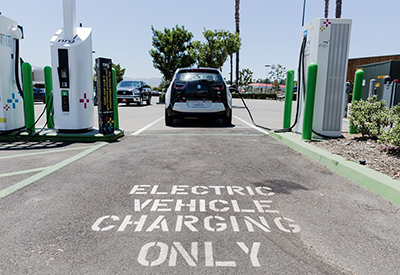EV Infrastructure Key to City of North Vancouver Greenhouse Gas Strategy

May 28, 2018
As the City of North Vancouver looks to meet its goal of reducing greenhouse gas emissions by 50% by 2050, Council has directed staff to look into how the city should approach future policy when it comes to electric vehicles and the infrastructure that supports it, reports Ben Bengtson in North Shore News.
A staff report states that the electric vehicle market has changed significantly over the past few years and the city’s public charging stations have become increasingly popular. According to data from the report, one charging station issued 2,073 kilowatt hours of energy in 2014. Last year, the same station issued a total of 58,548 kilowatt hours of energy.
Staff have already secured $38,000 from BC Hydro for research and engagement associated with developing a more sustainable electric vehicle strategy for the city.
In 2016, the city updated its sustainable development guidelines with the expectation that all projects seeking rezoning had to provide 20% of their residential parking spaces with access to electric vehicle charging.
“I think staff are doing some good work on this,” Mayor Darrell Mussatto is quoted as saying. “I do believe it’s time, though, that we get a little more aggressive with our policies in the sense of the way that we use the electric vehicle charging stations.” For example, the mayor believes the city should apply a fee to people using its charging stations. “I think that’s only fair to do cost recovery. As much as I think electric vehicles are a way to move forward, I do believe that if someone plugs in they should pay for the charge for electricity that they’re using.”
Any revenues could be used to invest further in electric charging infrastructure for the city, the staff report notes, but “the city needs to determine whether additional investment in public charging infrastructure is required,” especially seeing as the majority of electric vehicle charging is still done at home.









![Guide to the Canadian Electrical Code, Part 1 – 26th Edition[i] – A Road Map: Section 54](https://electricalindustry.ca/wp-content/uploads/2022/11/Guide-CE-Code-2.png)






